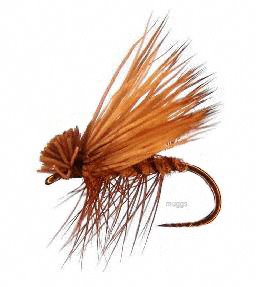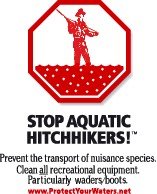How 'Bout A Brookie,
wouldja settle for a whitefish?
MADISON STILL HOT
Firehole Discharge Down
try the Lewis River

<-- "HELLIFIKNOW"
-- It shouldn't take seven hours to drive 31 miles; even if the speed limit is 45 mph, and the road is wet, and there is bison poop smeared on the asphalt, and the motor homes are stopping in the middle of the road - but it did.
-- The day dawned soft and gray with the hint of fog. We had breakfast at 8:oo AM; then off to the park for a leisurely drive to the Upper Gibbon. We started our annual pilgrimage to the upper Gibbon River on Friday. Our stated goal, this time each year, is to take a Grayling. Sometimes We Do! It started to drizzle: an absolutely perfect June morning.
-- A brief detour to see the Madison at the Barns Holes and a visit with some folks from Nebraska. The river is still swift but clear and fishable. We flung some Montana Dusters into the seams and took a couple of whitefish at Barnes #1. Then back to Da Ford.
-- We paused a couple of places along Riverside Drive to watch some Golden Eye Ducks rafting downstream. There was a Merganser with something in its bill, and a Great Blue Heron with the tail of a fish hanging out of its beak. There were some cars at the Muskrat Hole across from Grasshopper Bank (6 miles from the West Entrance,) we paused again to inspect the river. One angler had a nice fish and landed it as we watched.
-- There was no one at 9-mile hole so we re-rigged and fished the end of the PMD hatch with some Yellowstone Morning Glory flies, (size 16 - 18,) and then smoked a cigar. The upper end of the swift water had several fish rising & we went back for more. We took a dozen fish each, (+/-,) then gave up the hole to some local fishing guides who had never fished in Yellowstone. We suggested that they try the deep run in the middle of the river, over by the large erratic boulder on the shore, (titter, titter, titter.)
-- We paused a couple of places along the Gibbon River near National Park Meadows but decided that since the rain had quit we should continue on up toward Gibbon Falls. However, we hadn't fished the meadow near Tuff Cliffs in over two years. So we parked Da Ford, walked across the meadow, (it's firm and poses no problem now,) and tried a couple of rising fish. No luck with the little dry flies. Floated some big olive Wooly Worms and took a 14" Brown Trout. There are still Salmonflies, (Willow Flies if you're from Colorado,) working in this section. This lower section of the Gibbon River is very lightly fished, and will occasionally produce a Grayling so we justified the detour as the official beginning of the Grayling quest. Back to Da Ford.
-- As we climbed past Gibbon Falls and into Tanker Bend, (a fuel tank truck wrecked here long ago,) the riffle and run sections were clear and frothy. Some color reamins in the fast sections of the Gibbon in the canyon, but we saw several fisherfolk addressing the turbulent stream - we waved and wished them luck.
-- There was a cloud of bugs at the Artish Paint Pot turn-out. Da Ford killed about 200 for us and we stopped to identify them. Probably Baetis of some sort? We turned into the picnic area between the meadows to look at the stream.
-- Rumbling stomachs and grumbling thunder, (or the other way 'round,) announced lunch time - 2:30 PM and we weren't there yet. The Gibbon has cleared very nicely - thank you, and we visited with a pair of writer-fishers who had walked the Elk Meadows stretch. They had good stories 'bout some large fish and the clarity of the big sweeping bends that held them.
 -- Lunch was disposed of quickly, and then we drove to the pull-out just past Norris Junction and parked. It was 3:20 PM. The rain was fairly serious and the sky was dark; no thunder or lightning for the last hour or so. We rigged up with our Grayling armaments: small Elk Hair Caddis', and the local secret fly - "HELLIFIKNOW." (The simple recipe for this fly is given below.)
-- Lunch was disposed of quickly, and then we drove to the pull-out just past Norris Junction and parked. It was 3:20 PM. The rain was fairly serious and the sky was dark; no thunder or lightning for the last hour or so. We rigged up with our Grayling armaments: small Elk Hair Caddis', and the local secret fly - "HELLIFIKNOW." (The simple recipe for this fly is given below.)-- Rumor has it that a local famous fisher-writer was using the fly one day and was asked the name of it: "Hell If I Know," was his answer, and it stuck. It is too simple to have caught on with many "serious" fly fishers. We love it, (are we not serious?)
-- We fished from the Campground Pool, upstream to the road to Canyon Village: across the road to the single-cast-water. The vest-pocket meadows here are still a little damp and "squishy," (technical term.) This water is running at grade, & is soooo clear that you only get one cast per holding area. It's grossly under fished, challenging, and rewarding. There is a good population of Grayling in these little meadows. There is also a giant population of Brook Trout.
-- At about 6:30 the sky threatened again and our stomachs, (or thunder,) let us know that it was time to head back to Da Ford. We arrived at the parking lot at the same time as the hail and a couple of folks from Bozeman, Montana. We finished some chips and shared stories -- window to window, then headed back down the road. We took easily two dozen fish each, (probably more - every one of them a twinkling little Brook Trout of 6" - 10".) Grayling will be caught tomorrow - no pausing along the Madison!
-- At Madison Junction, (mandatory drainage break,) we met some folks from Jackson that had been fishing the Lewis River near the south entrance to Yellowstone National Park. They were dry fly purists and reported that just about any fly in a size 18 - 20 was working late in the afternoon. They reported that the Lewis River had cleared early and that they just came up for the Stoneflies on the Madison.
-- How does one measure success? Is it even a concept that should be applied to a day of fishing? We ended the day feeling a bit disappointed. We had not caught our Grayling. We don't keep track of numbers, and on occasion have been known to deflate or inflate numbers in a situational context -- yet we caught a lot of fish and were still just a little morose -- go figure! Just a case of the Gibbon River Blues: tomorrow we will catch a grayling. - Or, the next day.
.
Recipe for "HELLIFIKNOW"
Tail: dyed red squirrel, or red synthetic fibers, Body: silver tinsel, (mylar works, we use French metal,) Beard: reddish brown rump feather fibers from golden pheasant, Head: red thread. Hook: heavy nymph, size 4-12. Fish on short light leader in shallow clear water or long heavy leader in colored water. Brookies, Grayling, and other precocious young trout take this just the way a Bluegill takes an empty gold-plated hook.



.jpg)






